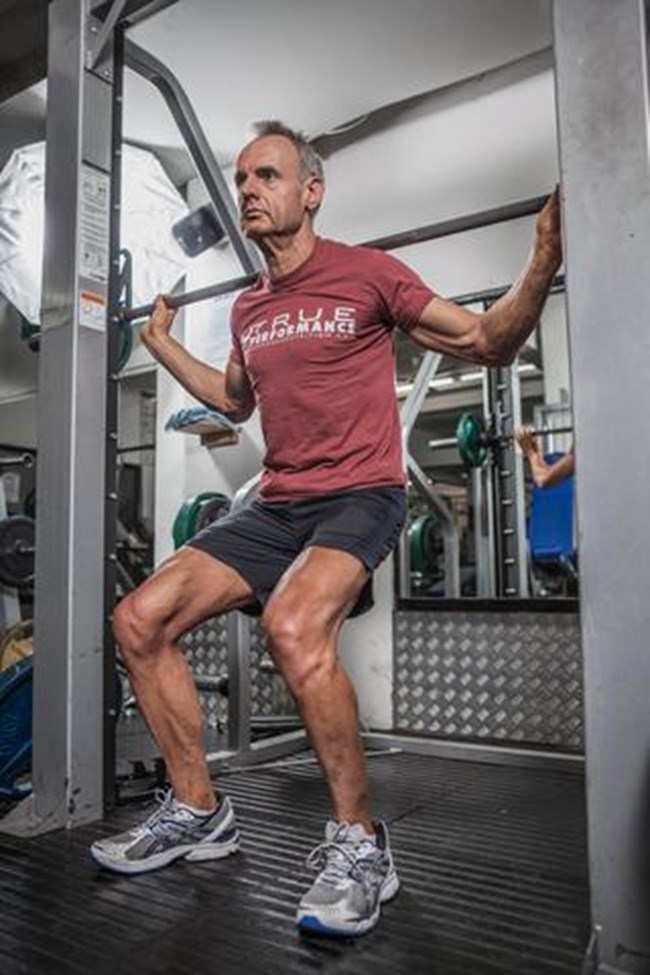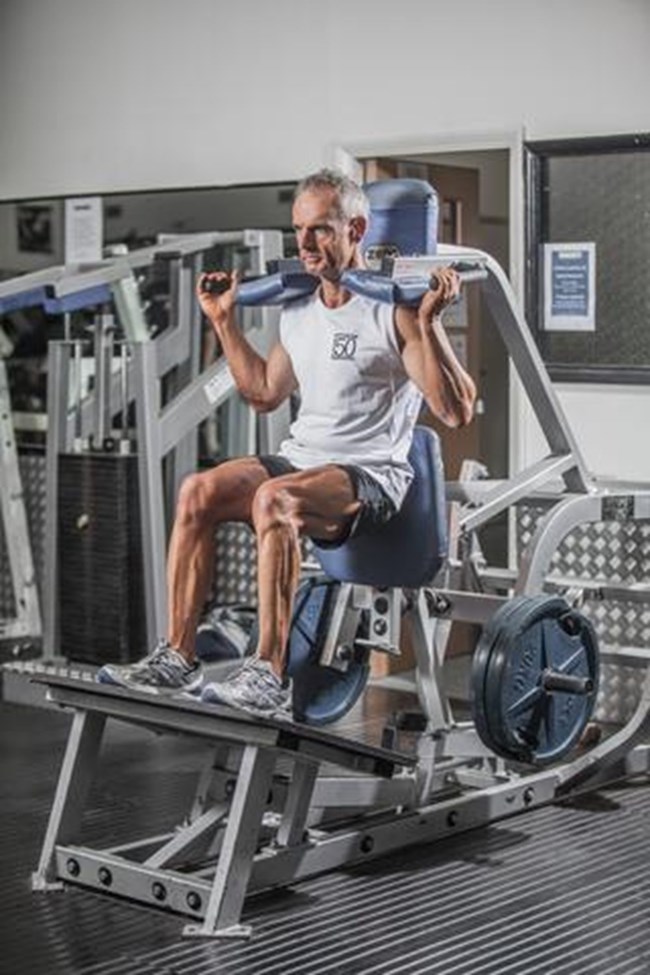Exercise - The ‘Silver Bullet’ of Health
- 1st May 2021
- Read time: 7 minutes
- Dr. Max Gowland
- Article
Over 50% of the UK adult population is now over 50, and the majority of those are retired or entering a pre-retirement phase. People are living longer and it’s clear that more of us are intending to stay active and enjoy the extra time we have as the years go on.
There are many ways you can stay active as you age such as swimming, walking and cycling. This article aims to focus on how you can get yourself back in the gym, enjoying the social aspects while keeping fit.
The longer it’s been since you last set foot inside a gym, the more you are going to have to rely on personal trainers to guide you through the right exercises for your fitness level and goals.
We wanted to dig deeper into the benefits of exercise for over 50s and the use of a personal trainer, which is why we’ve been chatting to Chris Zaremba, a personal trainer who focuses on clients in his age group – the over 50s.

What are the benefits of exercise for the over 50?
There are many benefits of adding exercise to your daily routine. A few of these benefits include losing weight, improvements in your mobility and positive mood-boosting effects.
1. Reduction of body fat
Adding exercise to your daily routine will mean a reduction of body fat levels and the addition of muscles. Increased body fat can be a dead weight for the body to carry around, creating extra work for the heart and making it harder for our joints to move around. It can also increase the likelihood of any metabolic syndrome condition arising, such as diabetes, cardiovascular disease or a stroke.
2. Improvements in mobility and independence
As well as your length of life, your quality of life is also vital. For many, this can mean the capability to live independently, such as being able to pick things up off the floor with ease or retrieve items from high shelves safely.
The phrase ‘use it or lose it’ is something to remember! Keeping mobile and active generates future enhanced levels of abilities that can last into your 70’s and beyond.
3. Positive effects on mental state
The joy of exercise is not immediately apparent, especially if you haven’t exercised for some time, but over time you may well come to enjoy taking exercise, and even look forward to it.
Chris has convinced several friends over 50 to take up a weekly 5km park run. They thought they would never stick to it – now they get grumpy if they struggle to attend one Saturday!
Why is a Personal Trainer beneficial to this age group?
The gym can be an unfamiliar place to a newcomer, perhaps slightly scary. There’s no obvious place to start or route to improve as there is with walking, jogging, cycling or swimming.
That’s when a personal trainer can advise, instruct and design a training and nutrition programme that considers any concerns or constraints and help you keep motivated to achieve your goals.
Many people over 50 like to have a trainer who is of similar years – and therefore has had broadly comparable life experiences.
Chris’s oldest client is 76-year-old Mike. Chris has been training Mike for over four years – and in that time his strength, flexibility, waistline, muscular development and cardiovascular capability have all improved, as has his heart recovery rate and aerobic capacity. According to the metabolic age calculation on the body-analysis scale, his body is now 10 years younger than it was when they first met.
Are there exercises to avoid at age over-50?
There are many different types of exercises that have specific benefits, but they can also give concern if not executed properly. The key is to start well within your capability and progress gradually.
In terms of the gym, as a newcomer you may like to start on resistance machines rather than free weights, so that if anything is dropped or let go then no harm is done. This is also where you should learn to move things slowly - any resistance exercise performed quickly has an increased risk of soft tissue injury or worse.

When you do move on to free weights, there are still some exercises you should avoid when you’re over 50. Avoid exercises that potentially put the back at risk, such as squats or deadlifts. This exercise can be replaced with the leg-press machine as it has similar benefits for the legs without putting additional weight down the backbone and spine.
Form is particularly important, which means only moving the body parts that are meant to move for each exercise. All personal trainers used to over 50 clients know that their clients, in general, have reduced flexibility and are more susceptible to injury. The body is a little less forgiving as the years go on.
What’s the best exercise for over 50?
The exercises that are most beneficial will vary between individuals. However, the three main exercise groups everyone can benefit from include:
1. Cardio exercise - e.g. the cross-trainer is usually a good place to start as it’s much lower impact than running (better for the knees).
2. Weight-training (resistance training) – e.g. compound exercises that work multiple muscle groups, such as chest press, shoulder press, leg press and back pulldown.
Resistance training has shown to have a positive effect on certain degenerative conditions, such as osteoporosis and sarcopenia.

3. Mobility and flexibility work – e.g. a beginners’ yoga class.
It’s particularly important for the over 50s not to miss out on this type of exercise, as range-of-motion, balance and co-ordination can easily be lost without it.
How frequently should those over 50 exercise?
The frequency of exercise is a big subject. It is very much a matter of personal choice, with there being a major mental aspect to it. If you enjoy it, then maybe go a little more often – it gives you something positive and useful to do. If you don’t enjoy it, then try and find a different approach to exercise to make it more enjoyable.
Anything is better than nothing – even if it’s just once or twice a week.
There is such a thing as overtraining. Your threshold for overtraining will increase as you get more used to it. The key symptoms of overtraining include fatigue, injury and lack of enthusiasm.
How can you look after your body after exercise to aid recovery?
Recovery from an exercise session is a vital part of a well-designed exercise programme - your muscles need to repair and rebuild after a session.
No-one can complete an exercise session effectively or enthusiastically if they are fatigued before it has even started, and the risk of injury is increased if joints, muscles and soft tissues are not adequately rested.
Allow time to recover – don’t work the same muscle group on adjoining days and leave a good gap if doing different types of exercise on the same day. Then do no other exercise for at least six hours.
Recovery and recuperation sessions should be planned as part of the overall scheduling of any exercise programme and a good PT will support you in this area.
Can supplements help with exercise?
In theory, one’s diet can in theory, supply most nutrients that the body needs. However, far too many of us eat a sub-optimal diet and fall short of those micronutrients that are vital for ideal body function. In fact data from public Health England studies show clearly that nearly all of us are lacking a number of vital nutrients(micro nutrients such as vitamins and minerals)
This shortfall is multiplied if the person is heavily into exercise as it can deplete the body of nutrients. Those over 50 also have enhanced nutritional needs.
The natural tendency of the body at this age is to weaken, due to loss in muscle mass and also strength, and it is this tendency we are combatting through our exercise programme. It makes total sense to assist this fitness activity by adding external supplements that form the building blocks of the body’s recovery and growth.
The specific supplements needed will vary between people. Age, type of activity and exercise intensity are three of the variables to be considered, so the best approach is to seek out supplements that meet those needs.
For muscle health, clearly high quality protein is the nutrient of choice and the best possible is of course whey protein, as proven in many scientific trials on older (and younger) adults. If you are vegetarian or indeed vegan it is much harder to get your protein requirement (around a 100 g per day) but it can be done with some research and careful eating.
Also, micronutrients such as the master vitamin, vitamin D, magnesium, zinc and even calcium are key for muscle health too.
All in all, a healthy diet combined with an exercise programme which focuses more on ‘resistance’ exercise is the perfect combination, BUT it is so important to keep this up on a regular basis and not a ‘now and again’ regime. Muscle health becomes more and more important as we age, so with a little extra effort we can significantly maintain our muscle health and strength.
Chris Zaremba (Fitness over Fifty)


